| H |
|
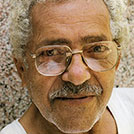 | Born on 31 March 1929 in Cairo, Egypt, Adam Henein is one of the leading contemporary sculptors of the Arab World. After graduating from the School of Fine Arts in Cairo in 1953, he received a scholarship to pursue his studies at the Academy of Fine Arts in Munich. In 1971, he moved to Paris, where he worked for twenty-five years. From 1989 to 1998, he was appointed by the Ministry of Culture to participate in the restoration of the Sphinx in Giza. In 1996, he founded the Aswan International Sculpture Symposium. Henein produces large and small-scale pieces using materials, such as granite, bronze, plaster, limestone and terracotta. He is also a talented painter and he renewed ancient techniques by using natural pigments on papyrus sheets.
Adam Henein died on 22 May 2020 at the Italian Hospital in Cairo.
Read more |
|
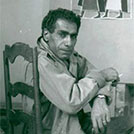 | Faiq Hassan was born on 1 July in 1914 Baghdad, Iraq. Hassan studied art at the Ècole Nationale Supérieure des Beaux-Arts on a government-funded scholarship. After receiving his degree, the artist returned to Iraq and became the director of the Department of Painting and Sculpture at the Institute of Fine Art in Baghdad. In 1950, Hassan founded the group Al-Ruwad, or the Pioneers, that began under the name Société Primitive. In 1967, Faiq Hassan formed another art group known as Al-Zawiya, or the Angle. Hassan worked in various styles ranging from acute realism to soft impressionism to angular abstraction. He worked primarily in oil paints and was a master of color theory. He is best known for his representations of the Iraqi working class and his Arab horsemen. Hassan's works can be appreciated in collections like Mathaf: Arab Museum of Modern Art in Qatar and the Jordanian National Gallery of Fine Arts. Hassan died on 11 January 1992 in Paris, France.
Read more |
|
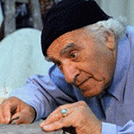 | Mohammed Ghani Hikmat was born in Baghdad, Iraq in 1929 and passed away 12 September 2011 in Amman, Jordan. Hikmat graduated from the Institute of Fine Art in Baghdad. He then studied at the Accademia di Belle Arti in Rome. He also trained in metals at the Instituto di Zaka in Florence. He subsequently taught sculpture at the Baghdad Institute of Fine Art and the College of Architectural Engineering at the University of Baghdad. Hikmat was a member of the Society of the Friends of Art and later the Al-Zawiya group. He was also an influential member of the Baghdad Group of Modern Art (BGMA). During his career, the sculptor created and assisted in many public works that dot the Baghdadi urban environment. These monumental works celebrate the richness of Iraq's cultural heritage. After the invasion of Iraq in 2003, Hikmat became an advocate for the preservation of Iraqi art.
Read more |
|
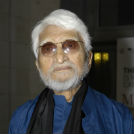 | Maqbool Fida Husain, born in 1913, was India’s pre-eminent modernist artist, renowned as the most celebrated, yet often controversial, figure of Indian modernism. He joined Bombay’s Progressive Artists’ Group in 1948, and began exhibiting internationally from the 1950s. Husain’s iconic style is figurative, with abstracted cubist forms and bright colors, yet his subjects are rooted in Indian cultural identity and his pluralistic vision as a secular Muslim artist. He was awarded India’s highest national recognitions—Padma Shree (1955), Padma Bhushan (1973), and Padma Vibhushan (1989). In 1996 and 2006, his nude figurative paintings of Hindu goddesses triggered public controversy and nationalist backlash. In a self-imposed exile, he left his native India in 2006. In 2009, he was commissioned by Her Highness Sheikha Mozah bint Nasser Al Missned, Chairperson of Qatar Foundation, to complete a series 99 paintings on the theme of Arab/Islamic civilization, and in 2010 was offered Qatari citizenship. The artist lived in Doha until his death in 2011.
Read more |
|
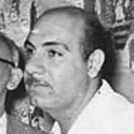 | Kadhim Haidar was born in 1932 in Baghdad, Iraq. Whether through the example set by his own work or in his capacity as a professor at the Academy of Fine Arts in Baghdad, Kadhim Haidar was one of the most influential modern artists in Iraq, inspiring the work of many artists throughout the nineteen-sixties and seventies. In the tumultuous years following the first Ba'th coup in 1963, his series of paintings, The Epic of the Martyr, set a new paradigm for the practice of art, one in which various concepts and cultural symbols were retooled in the artwork in order to give form to contemporary experience. In addition to painting, print-making and sculpture, Haidar also designed sets and costumes for a large number of theater productions in Baghdad.
Read more |
